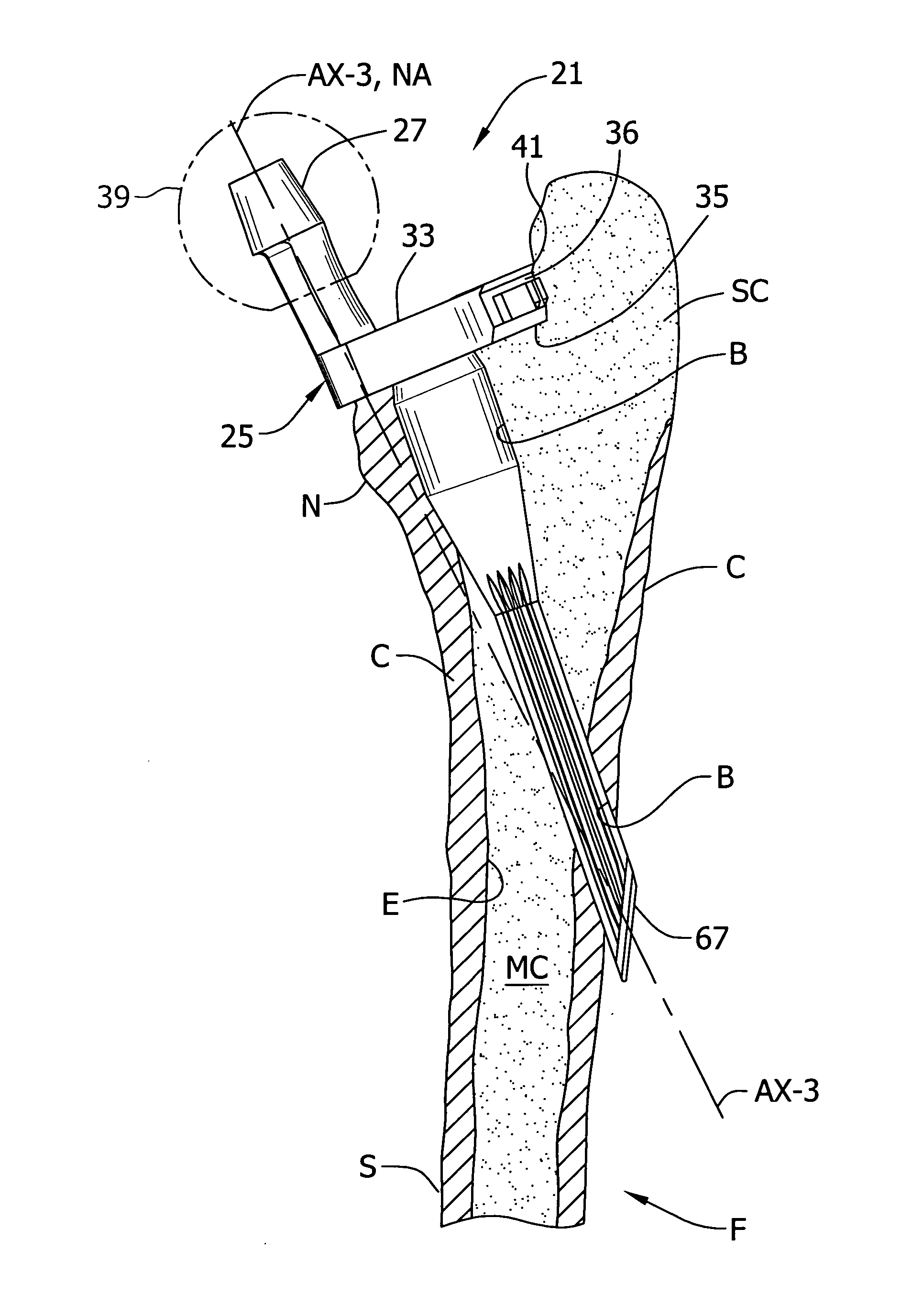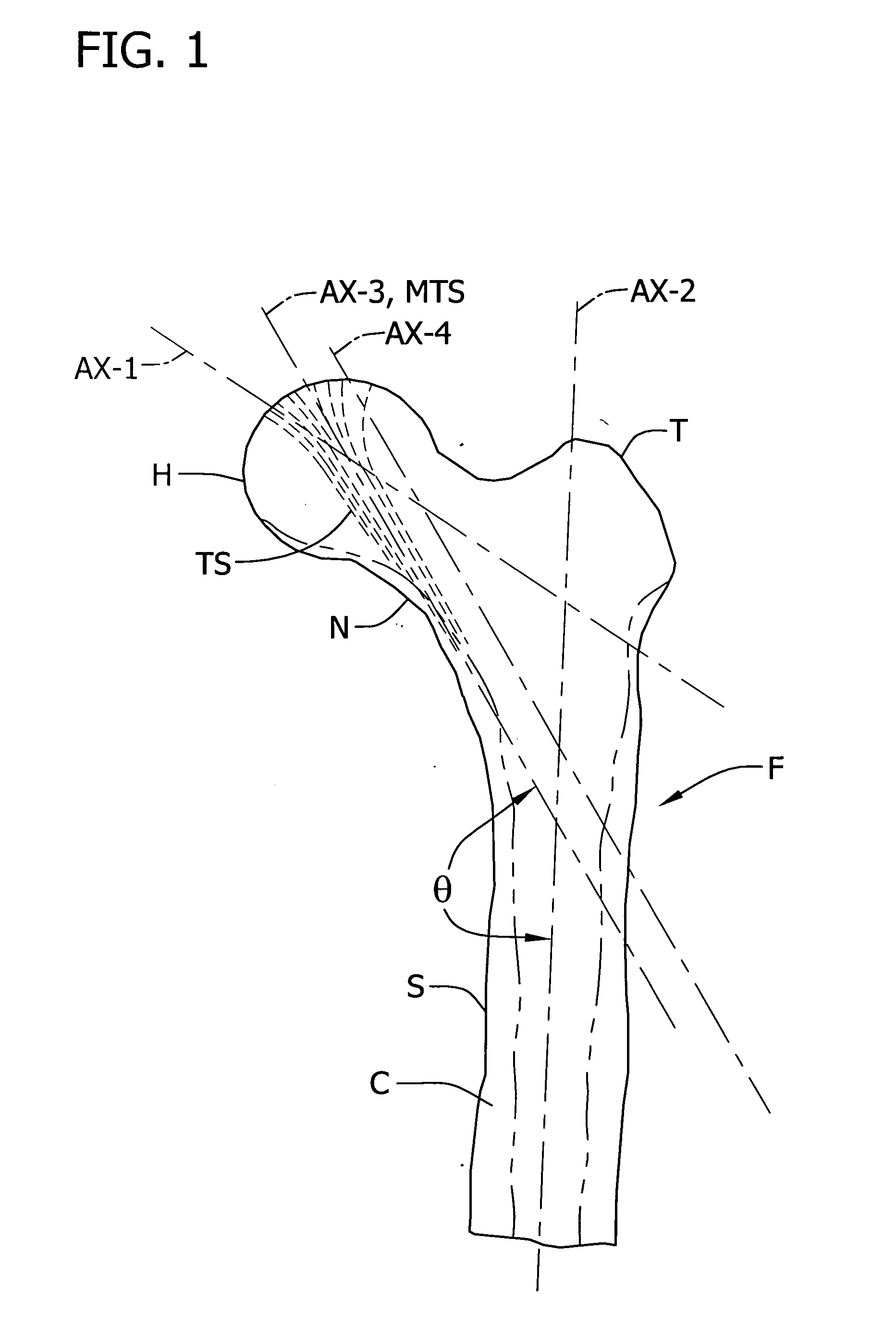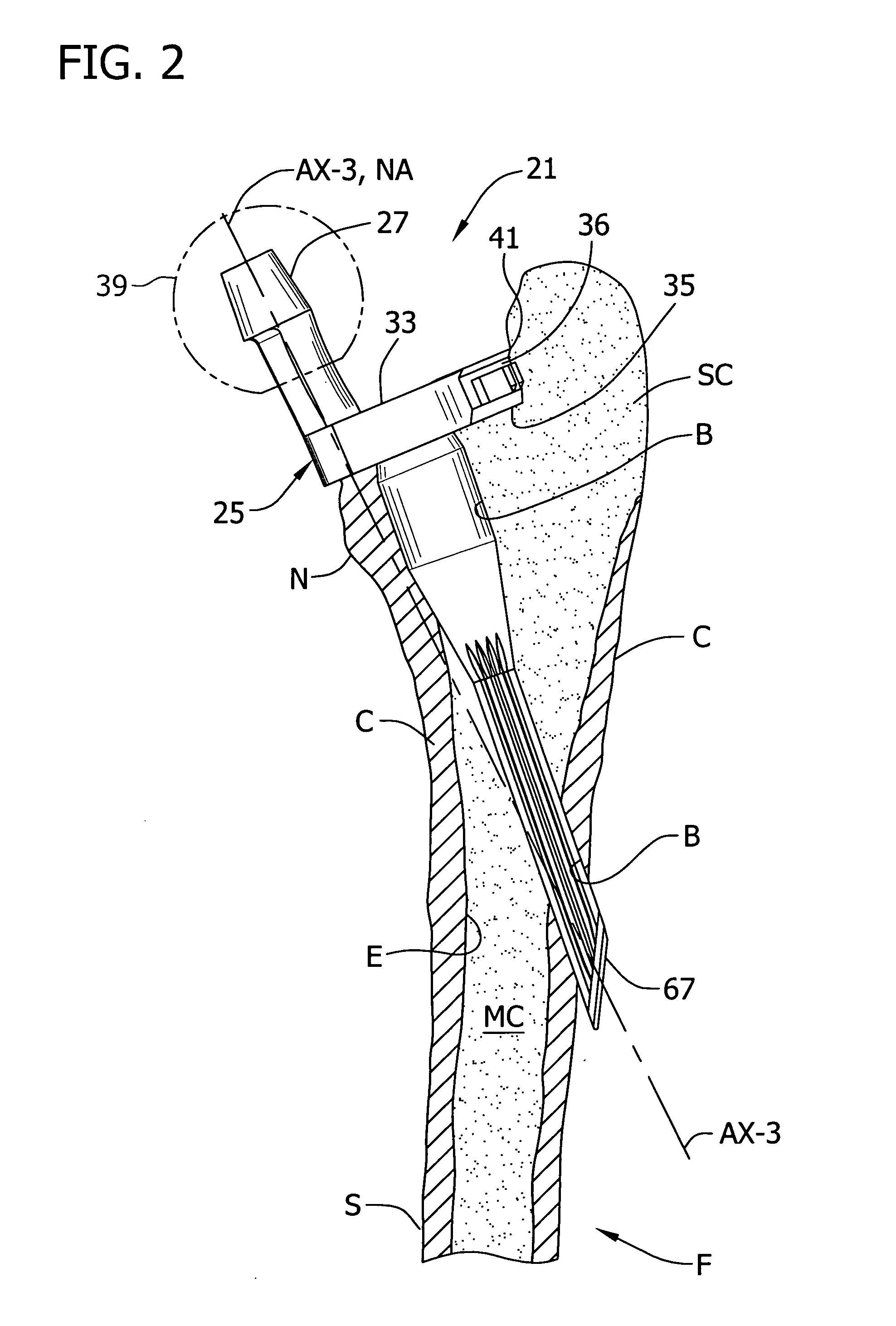Prosthesis and method of implantation
- Summary
- Abstract
- Description
- Claims
- Application Information
AI Technical Summary
Benefits of technology
Problems solved by technology
Method used
Image
Examples
Embodiment Construction
[0049] Referring now to the drawings and in particular to FIGS. 1-2, a transosseous prosthesis of an embodiment of the invention is designated in its entirety by the reference numeral 21. In this embodiment, the prosthesis is suitably sized and shaped for implantation in a femur F, though it is to be understood that the prosthesis may be sized and shaped for implantation in other bones, e.g., the humerus. The femur includes a femoral shaft S, a femoral head H (it is removed in FIG. 2), neck N, a trabecular stream TS and a greater trochanter T at the upper end of the shaft at the lateral side of the femur. The femur F has a hard layer of cortical bone C adjacent the surface of the bone, relatively soft cancellous bone SC, a medullary canal MC, and endosteum E inside the femur.
[0050] As implanted, the transosseous prosthesis 21 extends through a bore B generally from the resected femoral neck N diagonally across the medullary canal MC and out an opposite side of the femur. The prosth...
PUM
| Property | Measurement | Unit |
|---|---|---|
| Fraction | aaaaa | aaaaa |
| Fraction | aaaaa | aaaaa |
| Angle | aaaaa | aaaaa |
Abstract
Description
Claims
Application Information
 Login to View More
Login to View More - R&D
- Intellectual Property
- Life Sciences
- Materials
- Tech Scout
- Unparalleled Data Quality
- Higher Quality Content
- 60% Fewer Hallucinations
Browse by: Latest US Patents, China's latest patents, Technical Efficacy Thesaurus, Application Domain, Technology Topic, Popular Technical Reports.
© 2025 PatSnap. All rights reserved.Legal|Privacy policy|Modern Slavery Act Transparency Statement|Sitemap|About US| Contact US: help@patsnap.com



